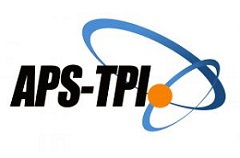Flipped Classroom Learning Design Using the ASSURE Model
Abstract
Limited learning time in class is one of the factors inhibiting instructional objectives. In connection with this problem, the flipped classroom is considered one form of the right strategy to achieve learning objectives. This research describes the development of a learning system based on the flipped classroom. The study was conducted at SMAN 10 Malang. The research subjects were 30 students in grade X. This development’s final product is the syntax of flipped classroom learning in PJOK subjects integrated with the ASSURE model. The development of this learning design has collaborated with the Unit Kegiatan Belajar Mandiri (UKBM)/ an independent learning design unit based on a learning management system (LMS). The validation results’ percentage of the learning design obtained a score of 93.33; the media validation results were 94.28; and, the content validation results were 92.00. The field trials’ results on the products also revealed satisfactory results with a percentage score of 80.61. Furthermore, the research subjects’ learning evaluation results interpreted that all students (100%) could achieve the KKM (Kriteria Ketuntasan Minimum) / minimum completeness criteria value. Thus, it can be concluded that the development of flipped classroom-based learning design is very effective or feasible to be implemented in PJOK.
Keywords
Full Text:
PDFReferences
Baharun, H. (2016). Pengembangan Media Pembelajaran Pai Berbasis Lingkungan Melalui Model ASSURE. Cendekia: Journal of Education and Society, 14(2), 231. https://doi.org/10.21154/cendekia.v14i2.610
Bishop, J. L., & Varleger, M. . (2013). The Flipped Classroom: A Surver of the Research 120th ASEE National Conference Proceedings. 120th ASEE National Conference Proceedings. Atlanta.
Bonk, C. J., & Kim, K. J. (2004). Future Directions of Blended Learning in Higher Education and Workplace Learning Setting. USA: Indiana University.
Bregman, J., & Sams, A. (2012). Flip Your Classroom Reach: Every Student in Every Class Every Day. Washington DC: ISTE and ASCD.
Darmawan, D. (2014). Pengembangan E-learning Teori dan Desain. Bandung: PT. Remaja Rosda Karya.
Dick, W., Carey, L., & Carey, J. O. (2004). The Systematic Design of Instruction (6th ed.). New York: Pearson.
Dwiyogo, W. (2014). Analisi Kebutuhan Pengembangan Model Rancangan Pembelajaran Berbasis Blended Learning (PBBL) Untuk Meningkatkan Hasil Belajar Pemecahan Masalah. Jurnal Pendidikan Dan Pembelajaran (JPP), 21(1), 71–78.
Enfield, J. (2013). Looking at the Impact of the Flipped Classroom Model of Instruction on Unde...: EBSCOhost. Tech Trends: Linking Research and Practice to Improve Learning, 57(6), 14–27. Retrieved from http://ehis.ebscohost.com.ezproxy.strose.edu/ehost/pdfviewer/pdfviewer?vid=6&sid=4324c770-0fa1-45f9-8305-58c23246b361%40sessionmgr4004&hid=4111
Gagnon, G. W., & Collay, M. (2001). Designing of Learning (6th ed.). California: Corwin Press, INC.
Graham, C. R. (2006). Blended learning systems: Definition, current trends, and future directions. Handbook of Blended Learning: Global Perspectives, Local Designs, (May), 3–21.
Harjanti, N. S. (2008). PENINGKATAN PARTISIPASI DAN KREATIVITAS SISWA PADA MATA PELAJARAN GEOGRAFI DENGAN MODEL ASSURE DI KELAS X D MAN TEMPURSARI MANTINGAN NGAWI. Universitas Sebelas Maret.
Kementerian, Pendidikan, & Kebudayaan. Permendikbud no.36 tahun 2014. , Permendikbud § (2014)
Khazanah, D. I. N. (2012). Sistem Pembelajaran Assure Dapat Meningkatkan Hasil Belajar Memukul Bola Dalam Permainan Kasti Pada Siswa Kelas IV SD Negeri Purworejo Kecamatan Banjarsari Surakarta Tahun Pelajaran 2011/2012. Universitas Sebelas Maret.
Muammar, H., Harjono, A., & Gunawan, G. (2017). Pengaruh Model Pembelajaran Assure dan Pengetahuan Awal Terhadap Hasil Belajar IPA Fisika Siswa Kelas Viii SMPN 22 Mataram. Jurnal Pendidikan Fisika Dan Teknologi, 1(3), 166. https://doi.org/10.29303/jpft.v1i3.254
Pransisca, M. A., Marhaeni, A. A. I. N., & Lasmawan, I. W. (2018). Pengaruh Model Pembelajaran Assure Bernuansa Lingkungan Berbantuan Media Audiovisual terhadap Hasil Belajar IPS ditinjau dari Minat Outdoor Siswa. 2(2), 108–114.
Reigeluth, C. M. (1999). Instructional Design Theories and Models: A New Paradigm of Instructional Theory. Lawrence Erlbaum Associates.
Ridwanullah, T. I. (2014). Tingkat Penggunaan Sarana Prasarana Olahraga Pada Mata Pelajaran Penjas Orkes Kaitannya Dengan Hasil Belajar Motoric. Bandung: Universitas Pendidikan Indonesia.
Semerty, N. M. D., Meter, I. G., & Kristiantari, M. G. R. (2013). Model Pembelajaran ASSURE Bermuatan Soft Skill Berpengaruh Terhadap Hasil Belajar IPS Siswa Kelas V SD Negeri Gugus IX Abiansemal Badung. Retrieved from http://id.portalgaruda.org/?ref=browse&mod=viewarticle&article=105661
Setyosari, P., & Sihkabuden. (2005). Media Pengajaran. Malang: Elang Press.
Smaldino, E.S., D. (2011). Instructional Technology and Media for Learning Edisi ke-9. Jakarta: Kencana Press.
Smith, P. L., & Ragan, T. J. (2005). Instructional Design Upper Saddle River. NJ: Prentice-Hall, INC.
Sundayana, R. (2019). Perbandingan Desain Pembelajaran ASSURE dan PPSI untuk Meningkatkan Kemampuan Pemecahan Masalah Matematis dan Kemandirian Belajar. Mosharafa: Jurnal Pendidikan Matematika, 8(1), 143–154. https://doi.org/10.31980/mosharafa.v8i1.420
Syaakir, N., Wibawa, H. A., & Endah, S. N. (2013). No Title. Pengembangan Aplikasi Learning Management System (LMS) Pada Sekolah Menengah Pertama Islam Terpadu (SMPP IT) Harapan Bunda Semarang. Journal of Informatics and Technology, Vol. 2, No. 1, 2(1), 11–32. Retrieved from https://ejournal3.undip.ac.id/index.php/joint/article/view/6266/6052
Yulietri, F., Mulyoto, & Agung, L. (2015). Model flipped classroom dan discovery learning pengaruhnya terhadap prestasi belajar matematika ditinjau dari kemandirian belajar. Teknodika, 13(2), 5–17.
Refbacks
- There are currently no refbacks.





.png)













